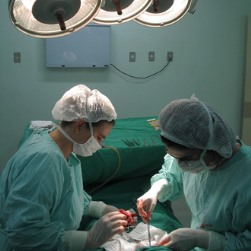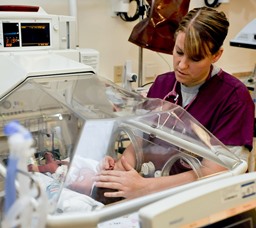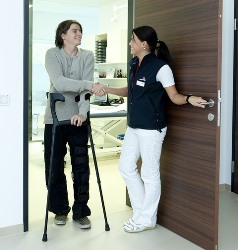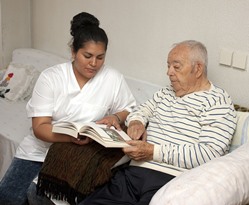How to Enroll In a Nursing School near Lead South Dakota
 Choosing the best nursing college near Lead SD may feel like a difficult undertaking, particularly if you don’t know what to look for in a good degree program. As you may presently know, for you to practice as a registered nurse, you must obtain the appropriate education and training to become licensed. So it is essential that you study and assess the qualifications of each school you are considering before enrolling in your ultimate selection. Unfortunately, too many prospective students base their selection solely on the price of tuition and the nearness of the school. Choosing the least expensive college or the one that is closest to your home is probably not the most ideal way to pick a nursing program. There are a number of essential additional factors to check out before you decide where to enroll in classes. But before we explore that checklist, let’s first discuss what the role of a registered nurse is in our healthcare system, as well as the nursing degree alternatives that are offered.
Choosing the best nursing college near Lead SD may feel like a difficult undertaking, particularly if you don’t know what to look for in a good degree program. As you may presently know, for you to practice as a registered nurse, you must obtain the appropriate education and training to become licensed. So it is essential that you study and assess the qualifications of each school you are considering before enrolling in your ultimate selection. Unfortunately, too many prospective students base their selection solely on the price of tuition and the nearness of the school. Choosing the least expensive college or the one that is closest to your home is probably not the most ideal way to pick a nursing program. There are a number of essential additional factors to check out before you decide where to enroll in classes. But before we explore that checklist, let’s first discuss what the role of a registered nurse is in our healthcare system, as well as the nursing degree alternatives that are offered.
Registered Nurse Job Functions
 Registered nurses are the most significant occupation in the medical care delivery system. RNs practice in many different medical environments, such as Lead SD hospitals, family practices, outpatient clinics, nursing homes and even schools. Their basic role is to assist doctors in the care of their patients. However, the specific duties of a registered nurse will be dependent on their job or area of expertise along with where they work. A few of the functions of an RN may include:
Registered nurses are the most significant occupation in the medical care delivery system. RNs practice in many different medical environments, such as Lead SD hospitals, family practices, outpatient clinics, nursing homes and even schools. Their basic role is to assist doctors in the care of their patients. However, the specific duties of a registered nurse will be dependent on their job or area of expertise along with where they work. A few of the functions of an RN may include:
- Providing medications
- Overseeing patients
- Conducting physical examinations
- Coordinating care
- Supervising LPNs, LVNs and nurse aides
- Educating patients and their families
- Maintaining health records and charts
Nurses with a higher degree may have more high level job duties and responsibilities. Nurse practitioners (NP), for example, must hold a Master’s Degree and commonly work more independently than their RN counterparts. They can provide primary or specialty care services, prescribe medications, and diagnose and treat basic illnesses or injuries.
Nursing Degrees Available
There are multiple degrees to choose from to become a registered nurse. And in order to become an RN, a student must enroll in an accredited school and program. A student can receive a qualifying degree in as little as two years, or continue on to achieve a graduate degree for a total of 6 years. Following are some brief summaries of the nursing degrees that are offered in the Lead SD area.
- Associates. The Associate Degree in Nursing (ADN) is typically a 2 year program made available by community colleges. It readies graduates for an entry level position in nursing in healthcare facilities such as hospitals, clinics or nursing homes. Many use the ADN as an entry into nursing and subsequently earn a more advanced degree.
- Bachelor’s. The Bachelor of Science in Nursing (BSN) offers more comprehensive training than the ADN. It is generally a 4 year program offered at colleges and universities. Licensed RNs may be allowed to complete an accelerated program based on their prior training or degree and professional experience (RN to BSN). Those applying to the program might wish to advance to a clinical or administrative position, or be more competitive in the employment market.
- Master’s. The Master of Science in Nursing (MSN) is commonly a two year program after acquiring the BSN. The MSN program offers specialization training, for example to become a nurse practitioner or concentrate on administration, management or teaching.
When a graduating student has acquired one of the above degrees, she or he must pass the National Council Licensure Examination for Registered Nurses (NCLEX-RN) so as to become licensed. Other requirements for licensing can vary from state to state, so make sure to contact the South Dakota board of nursing for any state requirements.
LVN and LPN Programs
 There are principally two academic credentials offered that provide training to become either an LPN or an LVN. The one that can be completed in the shortest time period, typically about 1 year, is the certificate or diploma program. The 2nd alternative is to obtain a Practical Nursing Associate Degree. These programs are broader in nature than the diploma option and normally require 2 years to complete. The benefit of Associate Degrees, aside from supplying a higher credential and more in-depth training, are that they provide more transferable credit toward a Bachelor’s Degree in nursing. Regardless of the type of credential you pursue, it needs to be South Dakota approved and accredited by the National League for Nursing Accrediting Commission (NLNAC) or any other national accrediting organization. The NLNAC warrants that the syllabus effectively prepares students to become Practical Nurses, and that most graduates pass the 50 state required NCLEX-PN licensing exam.
There are principally two academic credentials offered that provide training to become either an LPN or an LVN. The one that can be completed in the shortest time period, typically about 1 year, is the certificate or diploma program. The 2nd alternative is to obtain a Practical Nursing Associate Degree. These programs are broader in nature than the diploma option and normally require 2 years to complete. The benefit of Associate Degrees, aside from supplying a higher credential and more in-depth training, are that they provide more transferable credit toward a Bachelor’s Degree in nursing. Regardless of the type of credential you pursue, it needs to be South Dakota approved and accredited by the National League for Nursing Accrediting Commission (NLNAC) or any other national accrediting organization. The NLNAC warrants that the syllabus effectively prepares students to become Practical Nurses, and that most graduates pass the 50 state required NCLEX-PN licensing exam.
CNA Programs
In contrast to many other licensed nurses, certified nursing assistants do not need to attain a college degree. CNA instruction can be received at Lead SD area community colleges or at vocational or trade schools. The duration of the instruction can take anywhere from just one to three months, leading to either a certificate or a diploma. Within the 1987 Nursing Home Reform Act, students are required to obtain at least 75 hours of training, 16 of which have to be clinical or “hands-on” training hours. Keep in mind that this is the minimal period of training required and every state has its specific prerequisites. So it’s crucial to make sure that the training program you enroll in not only meets the federal requirements, but additionally those for South Dakota or the state where you will be practicing. One recommendation is to get in touch with the health or nursing board for your state to make sure that the training course is state approved. Along with the training, each state requires a passing score on a competency test for certification. Depending on the state, there may be other requirements as well.
Questions to Ask Nursing Programs
 Now that you have decided on which nursing degree to enroll in, as well as if to attend your classes on campus near Lead SD or on the web, you can use the following pointers to begin narrowing down your choices. As you no doubt are aware, there are many nursing schools and colleges within South Dakota and the United States. So it is necessary to decrease the number of schools to choose from to ensure that you will have a workable list. As we previously discussed, the location of the school along with the price of tuition are probably going to be the first two points that you will consider. But as we also stressed, they should not be your sole qualifiers. So prior to making your ultimate selection, use the following questions to evaluate how your pick compares to the other schools.
Now that you have decided on which nursing degree to enroll in, as well as if to attend your classes on campus near Lead SD or on the web, you can use the following pointers to begin narrowing down your choices. As you no doubt are aware, there are many nursing schools and colleges within South Dakota and the United States. So it is necessary to decrease the number of schools to choose from to ensure that you will have a workable list. As we previously discussed, the location of the school along with the price of tuition are probably going to be the first two points that you will consider. But as we also stressed, they should not be your sole qualifiers. So prior to making your ultimate selection, use the following questions to evaluate how your pick compares to the other schools.
- Accreditation. It’s a good idea to make sure that the degree or certificate program as well as the school is accredited by a U.S. Department of Education recognized accrediting organization. Besides helping ensure that you receive a quality education, it may help in acquiring financial aid or student loans, which are oftentimes not provided in Lead SD for non-accredited schools.
- Licensing Preparation. Licensing criteria for registered nurses are different from state to state. In all states, a passing score is required on the National Council Licensure Examination (NCLEX-RN) in addition to graduation from an accredited school. Certain states require a specific number of clinical hours be completed, as well as the passing of additional tests. It’s imperative that the school you are attending not only provides an outstanding education, but also readies you to meet the minimum licensing requirements for South Dakota or the state where you will be working.
- Reputation. Check internet rating companies to see what the assessments are for all of the schools you are looking into. Ask the accrediting organizations for their reviews also. In addition, check with the South Dakota school licensing authority to find out if there are any complaints or compliance issues. Finally, you can contact some Lead SD healthcare organizations you’re interested in working for after graduation and ask what their opinions are of the schools as well.
- Graduation and Job Placement Rates. Find out from the RN schools you are considering what their graduation rates are as well as how long on average it takes students to finish their programs. A low graduation rate may be an indication that students were dissatisfied with the program and dropped out. It’s also imperative that the schools have high job placement rates. A high rate will not only substantiate that the school has a superb reputation within the Lead SD healthcare community, but that it also has the network of relationships to assist students attain employment.
- Internship Programs. The most ideal way to get experience as a registered nurse is to work in a clinical setting. Virtually all nursing degree programs require a specified number of clinical hours be completed. Many states have minimum clinical hour mandates for licensing as well. Find out if the schools have a working relationship with Lead SD hospitals, clinics or labs and help with the placing of students in internships.
Online Nursing Classes
 Attending nursing schools online is becoming a more favored way to receive training and acquire a nursing degree. Many schools will require attendance on campus for a component of the training, and virtually all programs require a specified amount of clinical rotation hours completed in a local healthcare facility. But since the rest of the training may be accessed online, this option may be a more accommodating solution to finding the free time to attend classes for many Lead SD students. Regarding tuition, a number of online degree programs are less expensive than other on campus choices. Even other expenses such as for commuting and study materials may be lessened, helping to make education more affordable. And numerous online programs are accredited by organizations such as the Commission on Collegiate Nursing Education (CCNE) for BSN and MSN degrees. And so if your job and family obligations have left you with very little time to pursue your academic goals, maybe an online nursing school will make it more convenient to fit a degree into your busy schedule.
Attending nursing schools online is becoming a more favored way to receive training and acquire a nursing degree. Many schools will require attendance on campus for a component of the training, and virtually all programs require a specified amount of clinical rotation hours completed in a local healthcare facility. But since the rest of the training may be accessed online, this option may be a more accommodating solution to finding the free time to attend classes for many Lead SD students. Regarding tuition, a number of online degree programs are less expensive than other on campus choices. Even other expenses such as for commuting and study materials may be lessened, helping to make education more affordable. And numerous online programs are accredited by organizations such as the Commission on Collegiate Nursing Education (CCNE) for BSN and MSN degrees. And so if your job and family obligations have left you with very little time to pursue your academic goals, maybe an online nursing school will make it more convenient to fit a degree into your busy schedule.
Attending a Nursing School near Lead SD?
Perhaps you have already made your decision to attend a Nursing Program in the greater Lead South Dakota area. If that is the case, then the following information may prove to be both educational and useful regarding the location of your future Alma Mater.
Lead, South Dakota
Lead (/ˈliːd/ LEED)[8] is a city in Lawrence County, South Dakota, United States. The population was 3,124 at the 2010 census. Lead is located in western South Dakota, in the Black Hills near the Wyoming state line.
The city was officially founded on July 10, 1876, after the discovery of gold. The city was named for the leads or lodes of the deposits of valuable ores.[9] It is the site of the Homestake Mine, the largest, deepest (8,240 feet [2,510 m]) and most productive gold mine in the Western Hemisphere before closing in January 2002. By 1910, Lead had a population of 8,382, making it the second largest town in South Dakota.[10]
Lead was founded as a company town by the Homestake Mining Company, which ran the nearby Homestake Mine. Phoebe Hearst, wife of George Hearst, one of the principals, was instrumental in making Lead more livable. She established the Hearst Free Public Library in town, and in 1900 the Hearst Free Kindergarten. Phoebe Hearst and Thomas Grier, the Homestake Mine superintendent, worked together to create the Homestake Opera House and Recreation Center for the benefit of miner workers and their families. Phoebe Hearst donated regularly to Lead's churches, and provided college scholarships to the children of mine and mill workers.[11]
Select the Right Nursing School near Lead SD
 Choosing the right registered nursing program is probably the most critical step to beginning a new career in the healthcare field. There are various factors that you should think about when choosing a nursing school. These variables will be prioritized differently depending on your current career goals, obligations, and economic situation. As we have emphasized in this content, it is essential that you select an RN college and a degree program that are both accredited and have outstanding reputations within the healthcare community. By using our list of qualifying questions, you will be able to develop a shortlist of schools to pick from so that you can make your final selection. And with the right degree and training, combined with your hard work and ambition to succeed, you can become a practicing nurse in Lead SD.
Choosing the right registered nursing program is probably the most critical step to beginning a new career in the healthcare field. There are various factors that you should think about when choosing a nursing school. These variables will be prioritized differently depending on your current career goals, obligations, and economic situation. As we have emphasized in this content, it is essential that you select an RN college and a degree program that are both accredited and have outstanding reputations within the healthcare community. By using our list of qualifying questions, you will be able to develop a shortlist of schools to pick from so that you can make your final selection. And with the right degree and training, combined with your hard work and ambition to succeed, you can become a practicing nurse in Lead SD.
More Awesome Locations in South Dakota
